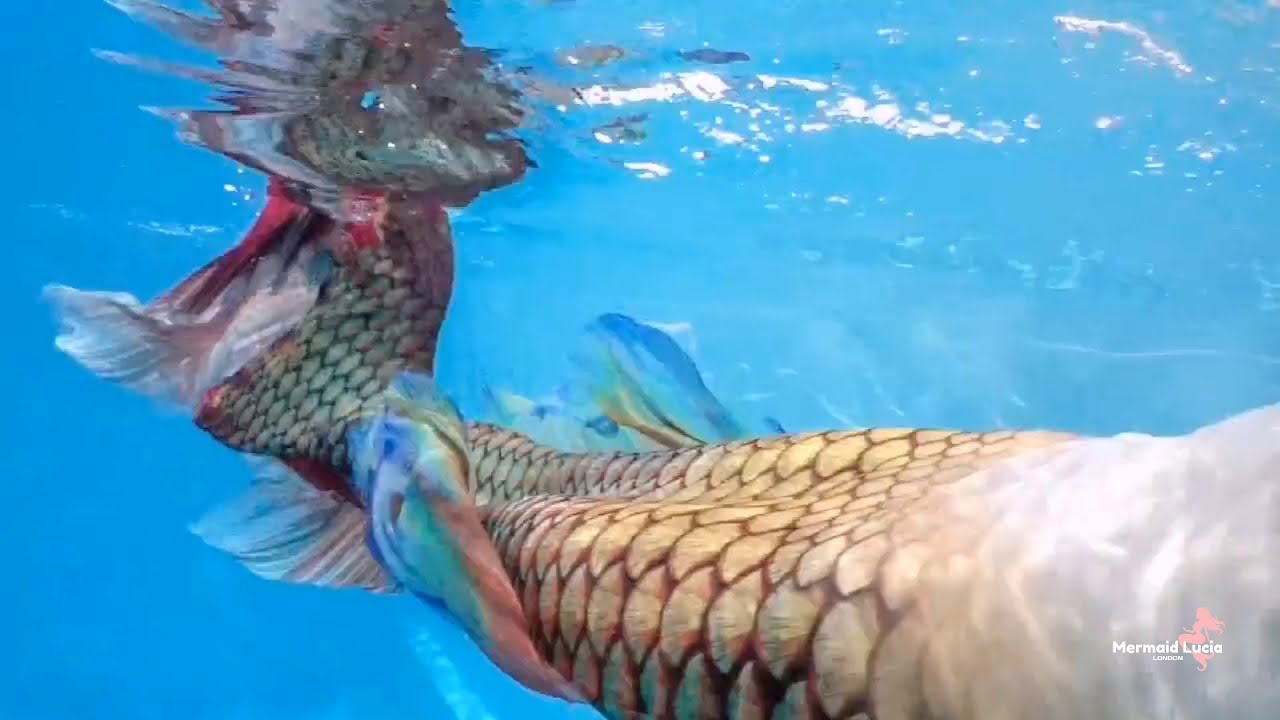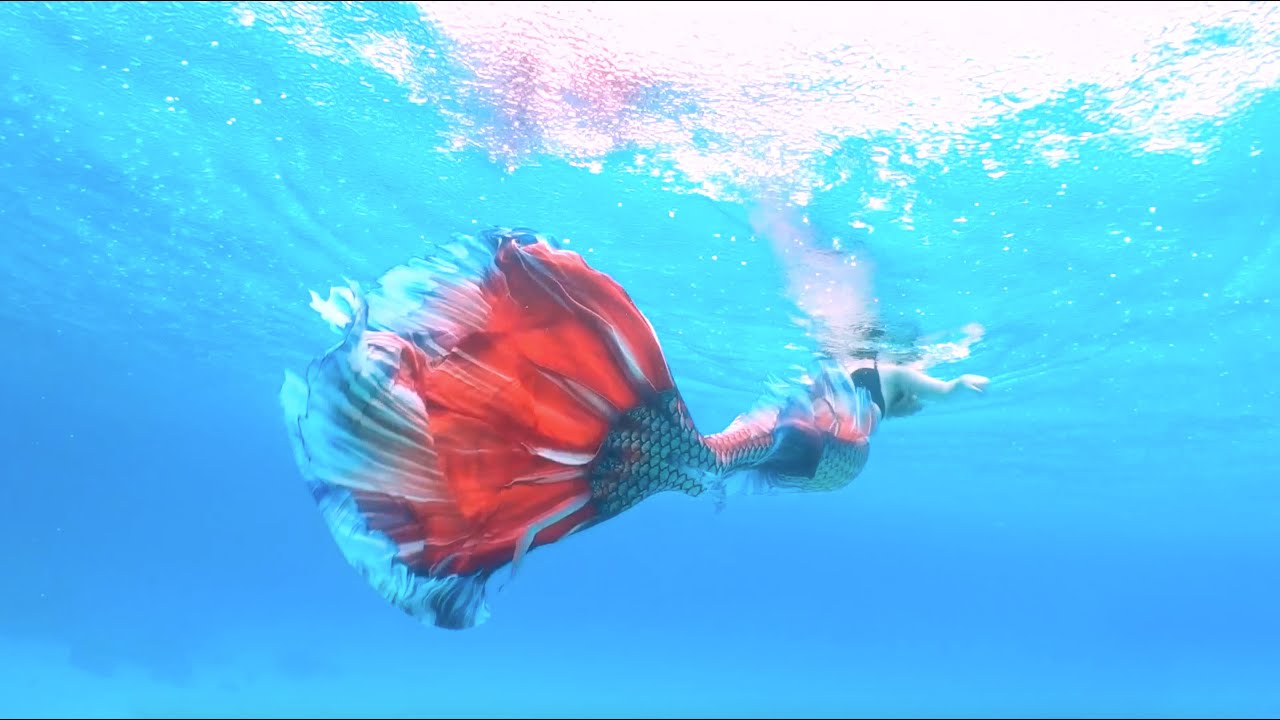
The Betta fish, also known as Siamese fighting fish, is one of the most striking and captivating species in the world of aquarium fish. With its vibrant colors, elaborate fins, and unique mermaid-like tails, the Betta fish has become a popular choice for fish enthusiasts and hobbyists alike. In this guide, we will delve into the fascinating world of the Betta fish, specifically focusing on their mesmerizing mermaid tails.
The mermaid tail of the Betta fish is a distinguishing feature that sets it apart from other fish species. This extraordinary tail, resembling the mythical mermaid’s fin, is the result of careful breeding and genetic selection. Betta fish come in a variety of tail types, including the popular half-moon, crown tail, and double tail. Each tail type displays its own characteristics and beauty, making every Betta fish truly unique.
To fully appreciate and care for a Betta fish’s mermaid tail, it is crucial to understand its anatomy and specific needs. The delicate and flowing fins require pristine water conditions to prevent any damage or infections. Providing a suitable tank with the right water parameters, proper filtration, and regular water changes is essential for the health and well-being of your Betta fish.
In addition to maintaining a clean and comfortable environment, it is essential to provide a nutritious and varied diet to support the growth and development of your Betta fish’s mermaid tail. Opt for high-quality Betta fish pellets and supplement their diet with frozen or live foods like bloodworms and brine shrimp. A well-balanced diet will enhance the vibrancy of their colors and promote the growth of their stunning fins and tails.
By understanding the unique beauty and specific requirements of the Betta fish’s mermaid tail, you can ensure the optimal care and enjoyment of these enchanting creatures. With their vibrant colors, elegant fins, and captivating mermaid-like tails, Betta fish truly are living artworks that can bring a touch of magic to any aquarium or fishkeeping hobby.
All about the Mermaid Tail
The mermaid tail is one of the most unique and mesmerizing features of the Betta fish. It is what distinguishes this species from others and gives it its enchanting beauty. The mermaid tail is characterized by its long, flowing, and colorful fins that resemble the tail of a mythical mermaid.
The mermaid tail is made up of several different types of fins, including the dorsal fin, anal fin, caudal fin, and pectoral fins. Each fin has its own unique shape, size, and color, adding to the overall elegance and grace of the Betta fish.
| Fin | Description |
|---|---|
| Dorsal fin | Located on the fish’s back, this fin helps with stability and balance. |
| Anal fin | Found on the bottom of the fish, it assists with propulsion and steering. |
| Caudal fin | The most prominent and eye-catching fin, it gives the Betta fish its mermaid-like appearance. |
| Pectoral fins | Located on the sides of the fish, they aid in maneuverability and direction. |
The mermaid tail comes in a wide variety of vibrant colors. From deep blues and purples to brilliant reds and oranges, each Betta fish has its own unique coloration pattern. This, combined with the flowing fins, creates a stunning visual display that captivates anyone who lays eyes on it.
Proper care and maintenance of the mermaid tail is essential to ensure the health and well-being of the Betta fish. It is crucial to provide a clean and spacious tank with appropriate water conditions. Regular monitoring of water temperature, pH levels, and filtration is necessary to keep the fins healthy and prevent diseases.
In conclusion, the mermaid tail is a truly remarkable feature of the Betta fish. Its beauty and elegance are unparalleled, making it a popular choice among fish enthusiasts. By understanding and properly caring for the mermaid tail, you can enjoy the captivating sight of your Betta fish gracefully swimming through the water.
Unveiling the Origin of the Betta Fish Mermaid Tail
The mesmerizing beauty of the betta fish mermaid tail has captivated fish enthusiasts for centuries. Its unique and ethereal appearance leaves admirers in awe, but have you ever wondered how this stunning feature came to be?
The origin of the betta fish mermaid tail can be traced back to the natural evolution of the species. Betta fish, also known as Siamese fighting fish, are native to the shallow waters of Southeast Asia, where their survival instincts have honed their unique physical characteristics.
Adaptations for Survival
In the wild, betta fish live in densely vegetated areas such as rice paddies, swamps, and slow-moving streams. Their journey to possessing a mermaid-like tail began as an evolutionary response to the challenges of their environment.
The long, flowing tail of the betta fish allows them to navigate through the dense vegetation with ease. This adaptation helps them swim swiftly and swiftly change directions, essential for escaping predators and catching prey.
Genetic Variations
Over time, genetic variations in betta fish populations led to the development of a variety of tail types, including the mesmerizing mermaid tail. These variations resulted from mutations and selective breeding by fishkeepers, who sought to enhance the betta fish’s natural beauty and promote specific traits.
Today, mermaid tail bettas are highly sought after in the aquarium trade due to their enchanting appearance. However, it is crucial to remember that they are the products of selective breeding and not found in their exact form in the wild.
While the precise genetic mechanisms behind the development of the betta fish mermaid tail are still being studied, it is clear that years of careful breeding and evolutionary adaptation have played a significant role in creating this remarkable trait.
Caring for Betta Fish with Mermaid Tails
As an owner of a betta fish with a mermaid tail, it is important to provide the proper care to ensure their well-being. Mermaid tail bettas have delicate fins that require careful maintenance to prevent damage and disease.
Keep their aquarium clean and well-maintained, ensuring optimal water quality. Provide them with a balanced diet of high-quality betta fish pellets and occasional live or frozen foods. Avoid overfeeding, as it can lead to obesity and other health issues.
- Monitor water temperature and maintain a consistent temperature between 78-80°F (25-27°C).
- Install a gentle filter to provide adequate water circulation without causing excessive current that can stress the betta fish’s delicate fins.
- Use silk or live plants in the aquarium to provide hiding spots and reduce stress.
By following these guidelines and providing a suitable environment, you can ensure that your betta fish with a mermaid tail thrives and continues to display its breathtaking beauty.
Characteristics of the Betta Fish Mermaid Tail

The Betta Fish Mermaid Tail is a unique trait in some Betta fish, giving them a majestic and eye-catching appearance. This distinctive feature sets them apart from other Betta fish variations, making them highly sought after by fish enthusiasts.
Physical Appearance
The Betta Fish Mermaid Tail has a tail that resembles the flowing fins of a mermaid, hence the name. Their tails are long, graceful, and have a distinctive shape that resembles a fan. The vibrant colors and intricate patterns that often adorn their tails further enhance their captivating beauty.
These fish typically have long and slender bodies, with a streamlined shape that allows them to swim effortlessly through the water. The elongated shape of their body accentuates the elegance of their mermaid-like tail, making them truly enchanting to behold.
Behavior
Betta Fish with mermaid tails can exhibit a range of behaviors that are often seen in other Betta fish variations. They are known for their territorial nature and can be aggressive towards other fish, especially males. It is important to provide them with enough space in their aquarium to reduce the chances of conflicts.
Despite their sometimes feisty nature, Betta Fish Mermaid Tails can also display playful and curious behavior. They may interact with their surroundings, investigating plants, decorations, or even their own reflection. Providing them with a stimulating environment can help keep them active and entertained.
Due to their long and flowing tails, Betta Fish Mermaid Tails require careful consideration when it comes to tank setup. They need plenty of space to swim and a clean environment to maintain the health of their delicate fins. It is recommended to have gentle water flow to prevent their tail from being damaged.
Overall, the Betta Fish Mermaid Tail is a stunning and unique trait that adds a touch of magic to any aquarium. Their graceful appearance and captivating behavior make them a beloved choice among fish enthusiasts around the world.
Choosing the Right Tank for your Betta Fish Mermaid Tail
When it comes to providing a suitable home for your Betta Fish Mermaid Tail, choosing the right tank is essential. Betta fish are known for their stunning colors and flowing fins, and a well-designed tank can enhance the beauty of these majestic creatures.
Here are some important factors to consider when selecting a tank for your Betta Fish Mermaid Tail:
| Tank Size | Ensure that the tank is spacious enough for your Betta Fish Mermaid Tail to swim comfortably. A minimum of 5 gallons is recommended, but the larger the tank, the better. Betta fish are active creatures and need plenty of space to explore. |
| Water Filtration | Invest in a tank with a good filtration system to keep the water clean and clear. Betta fish are sensitive to poor water quality, so regular filtration is necessary to maintain their health and well-being. |
| Heating | Betta fish are tropical creatures and require a constant water temperature between 78-80°F (25-27°C). Choose a tank with a built-in heater or purchase a separate heater to ensure your Betta Fish Mermaid Tail stays warm and comfortable. |
| Decorations | Add some decorations to your tank to create a visually appealing environment for your Betta Fish Mermaid Tail. However, avoid sharp or rough objects that could damage their delicate fins. Live plants and hiding spots are great additions to mimic their natural habitat. |
| Cover | Betta fish can jump out of tanks, so make sure to have a tight-fitting cover to prevent any accidents. This will also help in maintaining a stable water temperature and preventing debris from falling into the tank. |
By considering these factors and providing a suitable tank for your Betta Fish Mermaid Tail, you can ensure that they thrive in their new home and display their stunning colors and flowing fins to their fullest potential.
Setting up the Ideal Environment for your Betta Fish Mermaid Tail
Creating the perfect habitat for your Betta Fish Mermaid Tail is crucial for their overall health and well-being. These stunning fish thrive in specific conditions, and it’s important to provide them with the ideal environment to promote their vibrant colors and long, flowing fins.
Water Temperature and Quality
Betta Fish Mermaid Tails are tropical fish and require water temperatures between 78°F and 80°F (25°C to 27°C) to thrive. Use a reliable aquarium thermometer to monitor the water temperature and adjust the heater accordingly. Additionally, it’s important to maintain excellent water quality by regularly testing the water parameters, performing regular water changes, and investing in a good quality filtration system.
Tank Size and Décor

When it comes to tank size, bigger is always better. Aim for a minimum tank size of 5 gallons (19 liters) to provide ample swimming space for your Betta Fish Mermaid Tail. Decorate the tank with live or silk plants to mimic their natural habitat, offering plenty of hiding spots and resting places. Rocks, driftwood, and caves can also be added to provide variety and enrichment for your fish.
| Parameter | Ideal Range |
|---|---|
| pH Level | 6.5 – 7.5 |
| Ammonia Level | 0 ppm |
| Nitrite Level | 0 ppm |
| Nitrate Level | below 20 ppm |
| Hardness | 2 – 15 dGH |
Use a reliable water testing kit to monitor these parameters and make necessary adjustments to maintain a stable and healthy environment for your Betta Fish Mermaid Tail.
Remember to regularly clean the tank and remove any uneaten food or waste to prevent the buildup of harmful ammonia and nitrates. Maintaining a clean and well-maintained environment is crucial for the overall health and longevity of your Betta Fish Mermaid Tail.
By setting up the ideal environment for your Betta Fish Mermaid Tail, you can ensure that they thrive and display their captivating beauty to the fullest.
Q&A:
What is a Betta fish with a mermaid tail?
A Betta fish with a mermaid tail refers to a specific variety of Betta fish that has long and flowing finnage, resembling the tail of a mermaid.
Where do Betta fish with mermaid tails come from?
Betta fish with mermaid tails are a result of selective breeding. Originally, Betta fish are native to Thailand and other parts of Southeast Asia.
Are Betta fish with mermaid tails difficult to care for?
Like any other Betta fish, Betta fish with mermaid tails require proper care and a suitable aquarium setup. However, their long and delicate fins may require extra attention to avoid damage and injury.
What are the ideal tank conditions for Betta fish with mermaid tails?
Betta fish with mermaid tails thrive in a tank that is at least 2.5 gallons in size, with a heater to maintain the water temperature around 78-82 degrees Fahrenheit. They also need clean water, suitable filtration, and gentle water flow to prevent their delicate fins from being damaged.
What type of food should I feed my Betta fish with a mermaid tail?
Betta fish with mermaid tails should be fed a high-quality Betta-specific pellet or flake food, supplemented with occasional treats like freeze-dried or frozen bloodworms or brine shrimp.
What is a Betta fish with a mermaid tail?
A Betta fish with a mermaid tail refers to a specific type of Betta fish that has long, flowing fins that resemble the tail of a mermaid. This is a result of selective breeding, which has created this beautiful and unique variation in the species.